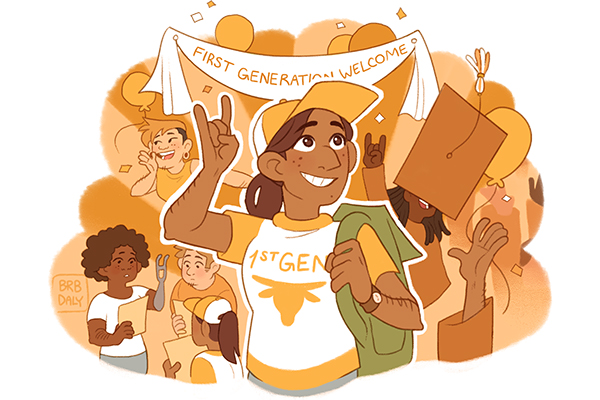For incoming first-generation students, UT’s campus may seem daunting, but offices, organizations and current first-generation students across campus are collaborating with a hope to make the college transition a little easier for them.
According to UT’s first-generation website, being a first-generation college student usually means neither parent of the student earned a college degree, but students whose parents earned degrees in foreign countries often identify as first-generation as well. First-generation undergraduate students make up about 20% of UT’s population, according to UT’s first-generation website.
The First-Generation Commitment Working Group launched two new resources for first-generation students over the summer: freshman and transfer orientation welcome sessions and the First-Generation Living Learning Community in Jester West. The Living Learning Community has 23 members this year and will provide biweekly meetings, one-on-one mentors, speakers, events and a community within Jester to call home, said Kayleigh Damphousse, transition coordinator for New Student Services.
“We’re going to have … VIP speakers on some special topics that a lot of our first-generation college students identify as wanting or wish they knew,” Damphousse said. “(Speakers will focus on) a lot of information about resilience and grit and imposter syndrome that a lot of first-generation college students identify with feeling.”
The First-Generation Kickoff Weekend includes a tailgate for the Texas vs. LSU football game on Sept. 7. On Sept. 8, students can attend workshops and a meeting with UT President Gregory Fenves and First Lady of UT Carmel Fenves, who is a first-generation alumna.
UT’s efforts to help first-generation students was recognized in May when UT was named a First Forward Institution by the Center for First-generation Student Success in its inaugural cohort of 80 such institutions. The center is an initiative by the National Association of Student Personnel Administrators to advocate for first-generation students.
“The designation really helps us to get national recognition on first-gen initiatives, and we will be able to be a part of the NASPA cohort for two years with further involvement after those two years,” said Mike Gutierrez, senior program coordinator for Student Success Initiatives and a first-generation UT alumnus.
“During the two years, we will be able to get professional development to help staff members across campus understand the needs of first-gen students.”
Other resources available for first-generation students include the Longhorn Link Program, First-Generation Longhorn Graduation and the First Abroad Planning Scholarship for studying abroad.
Government junior Esther Arriaga, who identifies as a first-generation student, said she found her community by joining the Longhorn League of United Latin-American Citizens and sorority Kappa Delta Chi. She said attending UT was a “culture shock” because she attended predominantly Latinx schools growing up.
“One of the things I really noticed was the income gap coming to UT,” Arriaga said. “A lot of that really influenced me to want to buy items and have different brand names that I usually wouldn’t afford. I wish someone would’ve told me that I didn’T need that type of stuff to fit in because you don’t.”



















